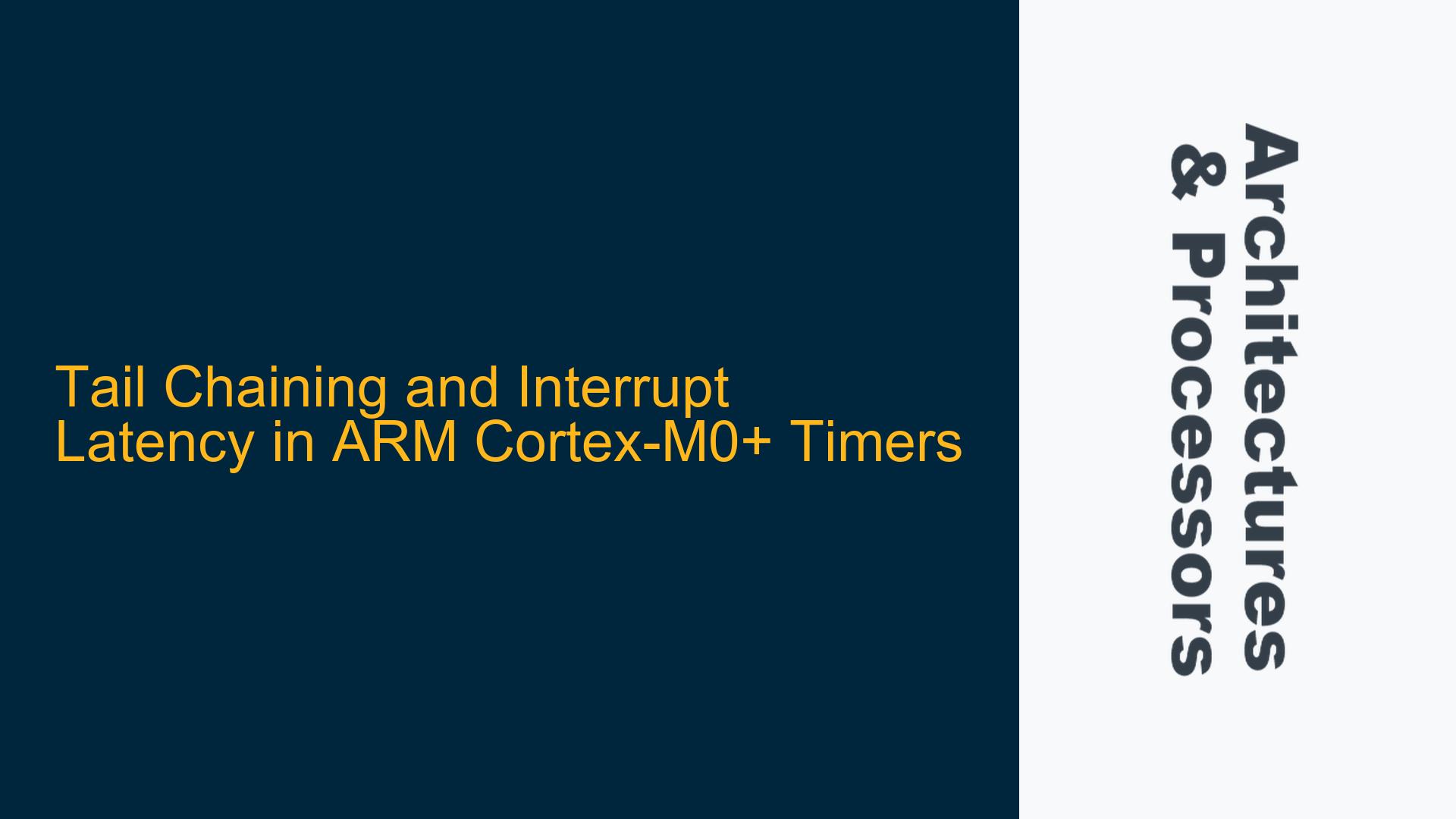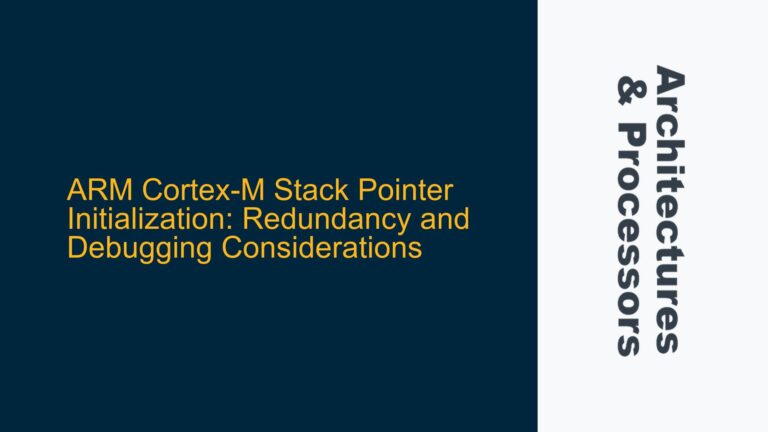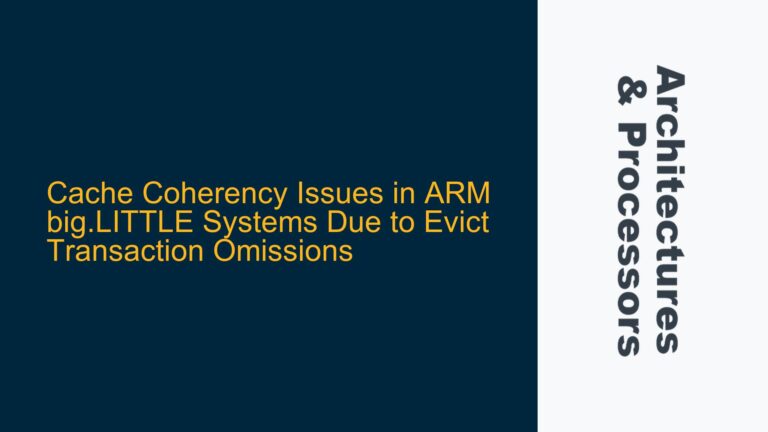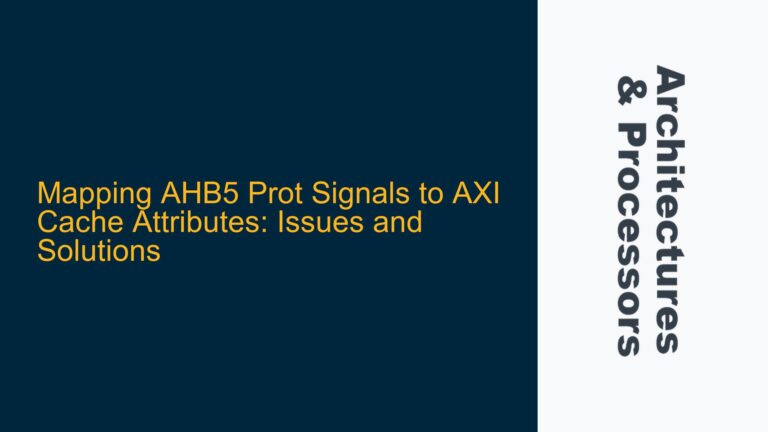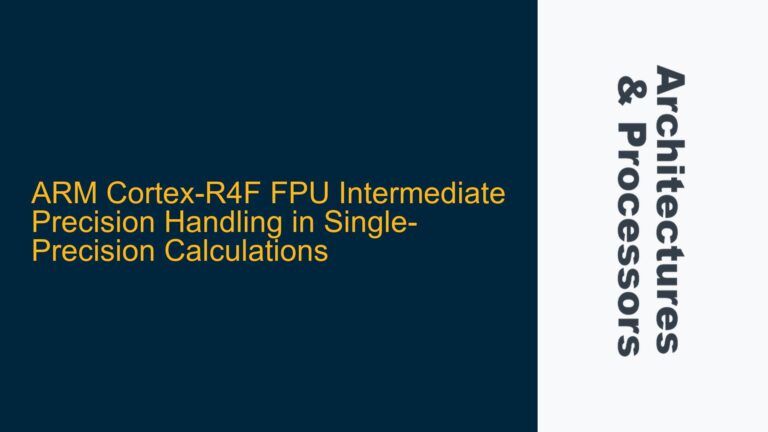ARM Cortex-M0+ Timer Interrupt Fluctuations Due to Tail Chaining and Priority Conflicts
The issue at hand involves an ARM Cortex-M0+ microcontroller, specifically the NXP MKE04Z128VLH4, where two timer interrupts are configured with periods of 625 microseconds and 1 millisecond. The 625 microsecond timer interrupt exhibits fluctuations when observed via a GPIO toggle and a digital storage oscilloscope (DSO). These fluctuations disappear when the 1 millisecond timer interrupt is disabled. Despite attempts to set priorities using the NVICSetPriority function, the issue persists. This suggests a deeper interaction between the interrupt handling mechanism, specifically tail chaining, and the priority settings of the interrupts.
Tail chaining is a feature in ARM Cortex-M processors that allows the processor to handle back-to-back interrupts more efficiently by reducing the overhead of stacking and unstacking the processor state. However, improper handling of interrupt priorities and the timing of interrupts can lead to unexpected behavior, such as the observed fluctuations in the 625 microsecond timer interrupt.
Interrupt Priority Mismanagement and Tail Chaining Effects
The root cause of the fluctuations in the 625 microsecond timer interrupt can be attributed to two primary factors: interrupt priority mismanagement and the effects of tail chaining. The ARM Cortex-M0+ processor uses a nested vectored interrupt controller (NVIC) to manage interrupt priorities and handling. Each interrupt source can be assigned a priority level, with lower numerical values indicating higher priority. When multiple interrupts occur simultaneously or in close succession, the NVIC uses these priority levels to determine the order in which the interrupts are serviced.
In this scenario, both the 625 microsecond and 1 millisecond timer interrupts are assigned the same priority level, which can lead to contention and unpredictable behavior. The NVIC may not consistently prioritize one interrupt over the other, leading to fluctuations in the timing of the 625 microsecond interrupt. Additionally, the tail chaining mechanism, which is designed to optimize the handling of back-to-back interrupts, may exacerbate the issue by causing the processor to switch between the two interrupts without fully completing the servicing of the first interrupt.
Another factor to consider is the exception number of the interrupts. The ARM Cortex-M0+ processor assigns a unique exception number to each interrupt source, which is used by the NVIC to determine the order of interrupt servicing when multiple interrupts have the same priority. In this case, the 625 microsecond timer interrupt has a lower exception number than the 1 millisecond timer interrupt, which should theoretically give it higher precedence. However, the observed behavior suggests that the tail chaining mechanism may be interfering with this expected order of servicing.
Implementing Tail Chaining and Adjusting Interrupt Priorities for Stable Timer Interrupts
To resolve the fluctuations in the 625 microsecond timer interrupt, a combination of tail chaining implementation and careful adjustment of interrupt priorities is required. The following steps outline the process for achieving stable timer interrupts:
-
Assigning Unique Priorities to Timer Interrupts: The first step is to ensure that the 625 microsecond and 1 millisecond timer interrupts are assigned unique priority levels. This can be done using the NVICSetPriority function, with the 625 microsecond interrupt being assigned a higher priority (lower numerical value) than the 1 millisecond interrupt. This ensures that the NVIC will consistently prioritize the 625 microsecond interrupt over the 1 millisecond interrupt, reducing the likelihood of contention and fluctuations.
-
Configuring Tail Chaining: Tail chaining can be optimized by ensuring that the processor completes the servicing of one interrupt before moving on to the next. This can be achieved by carefully managing the timing of the interrupts and ensuring that the 625 microsecond interrupt has sufficient time to complete before the 1 millisecond interrupt is triggered. This may involve adjusting the periods of the timers or adding small delays in the interrupt service routines (ISRs) to prevent overlap.
-
Exception Number Consideration: Since the 625 microsecond timer interrupt has a lower exception number than the 1 millisecond timer interrupt, it should theoretically be serviced first. However, to ensure consistent behavior, it is important to verify that the NVIC is correctly interpreting the exception numbers and prioritizing the interrupts accordingly. This can be done by reviewing the NVIC configuration and ensuring that the exception numbers are correctly assigned to the timer interrupts.
-
Testing and Validation: After implementing the above changes, it is important to thoroughly test the system to ensure that the fluctuations in the 625 microsecond timer interrupt have been resolved. This can be done by observing the GPIO toggle using a DSO and verifying that the timing of the interrupt is consistent and stable. Additionally, the system should be tested under various load conditions to ensure that the changes do not introduce new issues or performance bottlenecks.
-
Optimizing ISR Code: The code within the interrupt service routines (ISRs) for both timer interrupts should be optimized to minimize execution time and reduce the likelihood of contention. This may involve reducing the number of operations performed within the ISRs, using efficient data structures, and avoiding blocking operations that could delay the servicing of other interrupts.
-
Monitoring System Performance: Finally, it is important to monitor the overall performance of the system to ensure that the changes have not negatively impacted other aspects of the system. This can be done using performance profiling tools and by monitoring key system metrics such as CPU utilization, interrupt latency, and response times.
By following these steps, the fluctuations in the 625 microsecond timer interrupt can be effectively resolved, leading to a more stable and predictable system. The key is to carefully manage interrupt priorities, optimize the tail chaining mechanism, and ensure that the system is thoroughly tested and validated under various conditions.
Detailed Analysis of Tail Chaining and Interrupt Handling in ARM Cortex-M0+
To further understand the issue and the proposed solutions, it is important to delve deeper into the mechanics of tail chaining and interrupt handling in the ARM Cortex-M0+ processor. The ARM Cortex-M0+ is a low-power, 32-bit RISC processor designed for embedded applications. It features a simplified version of the NVIC found in higher-end Cortex-M processors, which manages interrupt priorities and handling.
Tail Chaining Mechanism
Tail chaining is a feature that allows the processor to handle back-to-back interrupts more efficiently. When an interrupt is being serviced and another interrupt of the same or lower priority occurs, the processor can "chain" the interrupts together, reducing the overhead of stacking and unstacking the processor state. This is particularly useful in systems with frequent interrupts, as it can significantly reduce the latency and overhead associated with interrupt handling.
However, tail chaining can also lead to issues if not properly managed. In the case of the 625 microsecond and 1 millisecond timer interrupts, the tail chaining mechanism may cause the processor to switch between the two interrupts without fully completing the servicing of the first interrupt. This can lead to fluctuations in the timing of the 625 microsecond interrupt, as observed in the DSO.
Interrupt Priority Management
The NVIC in the ARM Cortex-M0+ processor allows for up to 32 interrupt priority levels, with each interrupt source being assigned a unique priority. When multiple interrupts occur simultaneously or in close succession, the NVIC uses these priority levels to determine the order in which the interrupts are serviced. Interrupts with higher priority (lower numerical value) are serviced before interrupts with lower priority (higher numerical value).
In the case of the 625 microsecond and 1 millisecond timer interrupts, both interrupts were initially assigned the same priority level, leading to contention and unpredictable behavior. By assigning unique priority levels to the interrupts, the NVIC can consistently prioritize the 625 microsecond interrupt over the 1 millisecond interrupt, reducing the likelihood of fluctuations.
Exception Numbers and Interrupt Servicing
In addition to priority levels, the ARM Cortex-M0+ processor assigns a unique exception number to each interrupt source. These exception numbers are used by the NVIC to determine the order of interrupt servicing when multiple interrupts have the same priority. Interrupts with lower exception numbers are serviced before interrupts with higher exception numbers.
In this scenario, the 625 microsecond timer interrupt has a lower exception number than the 1 millisecond timer interrupt, which should theoretically give it higher precedence. However, the observed behavior suggests that the tail chaining mechanism may be interfering with this expected order of servicing. By carefully managing the timing of the interrupts and ensuring that the 625 microsecond interrupt has sufficient time to complete before the 1 millisecond interrupt is triggered, the system can achieve more stable and predictable behavior.
Practical Implementation and Testing
Implementing the proposed solutions requires careful consideration of the system’s timing requirements and interrupt handling mechanisms. The following steps outline the practical implementation and testing process:
-
Assigning Unique Priorities: Use the NVICSetPriority function to assign unique priority levels to the 625 microsecond and 1 millisecond timer interrupts. Ensure that the 625 microsecond interrupt is assigned a higher priority (lower numerical value) than the 1 millisecond interrupt.
-
Configuring Tail Chaining: Adjust the timing of the interrupts to ensure that the 625 microsecond interrupt has sufficient time to complete before the 1 millisecond interrupt is triggered. This may involve adjusting the periods of the timers or adding small delays in the ISRs to prevent overlap.
-
Verifying Exception Numbers: Review the NVIC configuration to ensure that the exception numbers are correctly assigned to the timer interrupts. Verify that the 625 microsecond interrupt has a lower exception number than the 1 millisecond interrupt.
-
Optimizing ISR Code: Optimize the code within the ISRs for both timer interrupts to minimize execution time and reduce the likelihood of contention. Use efficient data structures and avoid blocking operations that could delay the servicing of other interrupts.
-
Testing and Validation: Thoroughly test the system to ensure that the fluctuations in the 625 microsecond timer interrupt have been resolved. Observe the GPIO toggle using a DSO and verify that the timing of the interrupt is consistent and stable. Test the system under various load conditions to ensure that the changes do not introduce new issues or performance bottlenecks.
-
Monitoring System Performance: Use performance profiling tools to monitor key system metrics such as CPU utilization, interrupt latency, and response times. Ensure that the changes have not negatively impacted other aspects of the system.
By following these steps, the system can achieve stable and predictable timer interrupts, with the 625 microsecond interrupt consistently toggling the GPIO pin without fluctuations. The key is to carefully manage interrupt priorities, optimize the tail chaining mechanism, and ensure that the system is thoroughly tested and validated under various conditions.
Conclusion
The fluctuations in the 625 microsecond timer interrupt on the ARM Cortex-M0+ microcontroller are caused by a combination of interrupt priority mismanagement and the effects of tail chaining. By assigning unique priority levels to the timer interrupts, optimizing the tail chaining mechanism, and carefully managing the timing of the interrupts, the system can achieve stable and predictable behavior. Thorough testing and validation are essential to ensure that the changes do not introduce new issues or performance bottlenecks. With these steps, the system can achieve reliable and consistent timer interrupts, leading to a more stable and predictable embedded system.
